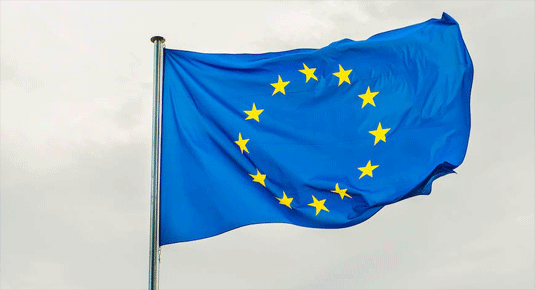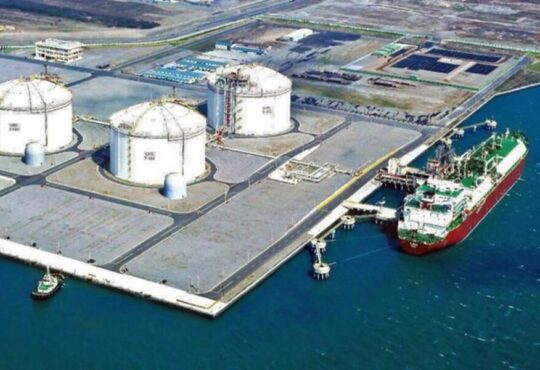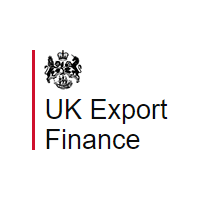

Make or buy? When not to outsource is a perplexing decision many electronics equipment manufacturers are trying to decide as they see rising operational input costs against softening demand in a macro environment that is becoming increasingly unpredictable. These days, good corporate planners and forecasters are worth their weight in gold.
Shifts in global macroeconomic trends are impacting regional and local economies everywhere and many manufacturers and manufacturing communities in the European Union are feeling the pressure. One of the biggest challenges facing electronics manufacturers in the EU is competition from low-cost producers, particularly manufacturers from Asia. This can make it difficult for EU manufacturers to compete on price and can lead to a loss of market share.
Another major challenge for electronics manufacturers in the EU is access to skilled labor. The EU has a relatively high unemployment rate and a shortage of workers with the skills and qualifications required to work in the electronics industry.
Electronics manufacturers in the EU can also face difficulties in accessing finance, particularly for small and medium-sized enterprises (SMEs). This can make it difficult for manufacturers to invest in new technology and equipment and can limit their ability to grow and expand their businesses.
While these challenges are not just unique to the EU, manufacturers worldwide are facing similar issues.
European manufacturing energy costs
Meanwhile, adding to the above, the EU also has relatively high energy and production costs compared to other regions, which can make it more difficult for electronics manufacturers to be competitive in the global market.
In addition to high energy costs, having a reliable, uninterrupted power supply is critical to the electronics manufacturing industry, for several reasons:
- Electronics manufacturing requires a significant amount of power, and a reliable power supply is necessary to keep production lines running smoothly. Interruptions in power supply can cause production lines to shut down, resulting in lost productivity, delays and further increased costs.
- Many electronic devices and components are sensitive to power fluctuations and power outages, and can be damaged or destroyed as a result. A reliable power supply helps to protect expensive equipment and prolongs its lifespan while also helping to reduce equipment maintenance costs.
- A reliable power supply is essential for maintaining consistent product quality. Power fluctuations and outages can affect the performance and functionality of electronic devices, and can lead to increases in the number, and frequency, of qualify defects and product failures.
- An unreliable power supply can cause customer dissatisfaction and damage the reputation of a manufacturing company’s brand. Customer complaints and negative feedback can lead to loss of business.
To underscore the importance of reliable, uninterrupted power, the EU has several regulations in place to ensure a reliable source of power. Some of the primary regulations include:
- The Industrial Emissions Directive (IED) – This directive sets emissions limits for industrial facilities, including those in the electronics manufacturing industry, and requires manufacturers to install and maintain emissions-control equipment to reduce pollution.
- The Energy Efficiency Directive (EED) – This directive sets targets for energy efficiency and requires member states to set national energy efficiency targets, implement energy management systems, and provide information and support to industry to improve their energy efficiency.
- The Renewable Energy Directive (RED) – This directive establishes a framework for the promotion of renewable energy in the EU, with the goal of increasing the share of renewable energy in the EU’s overall energy mix.
- The Energy Performance of Buildings Directive (EPBD) – This directive sets requirements for the energy performance of buildings, including the energy efficiency of heating and cooling systems, lighting, and power supply.
- The Low Voltage Directive (LVD) – This directive sets safety requirements for electrical equipment and appliances, including those used in the electronics manufacturing industry.
- The Machinery Directive – This directive sets safety requirements for machinery, including power supplies and emergency stop systems
- The Eco-Design of Energy-related Products Directive (ErP) – This directive sets regulations for the energy efficiency of products, such as power supplies for electronic devices, that are used in the electronics manufacturing industry.
These regulations are subject to updates and modifications and the specific regulations may vary from one EU member state to another. It’s also important to keep in mind that each company has to comply with regulations in the country where it is based, and regulations regarding the power supply can vary among countries.
Programs and financial assistance for manufacturing community
To help EU member state manufacturers in all manufacturing industries face some of the macroeconomic challenges, leaders in Brussels have a variety of policies in place to protect manufacturing jobs and support workers who have lost their jobs.
These are in addition to tariffs and trade restrictions on certain goods to protect domestic EU manufacturers from foreign competition, while placing a strong emphasis on supporting workers who have been affected by job losses in the manufacturing sector.
To this end, the EU has invested in retraining programs, such as the European Globalization Adjustment Fund, which provides funding to Member states to help workers who have lost their jobs as a result of globalization find new employment.
The EU also has various initiatives and funding programs to support the manufacturing sector in general, such as the European Regional Development Fund and the European Social Fund.
European Globalization Adjustment Fund (EGAF)
It is difficult to measure the success of the European Globalization Adjustment Fund (EGAF) in protecting EU manufacturers from job losses to support the EU manufacturing sector. The EGAF is intended to provide targeted and timely assistance to workers who have lost their jobs as a result of economic globalization and structural changes in the EU economy – providing financial assistance for measures such as retraining, entrepreneurship support, and job placement services.
MANUFACTURING TRENDS
Aerospace & Avionics | Defense & Military | Industrial | Consumer Devices | Computing | Medical | Clean, Green Technology | Automotive | Networking Equipment | Telecom | Servers & Storage | Peripherals
However, the EGAF is a relatively small fund and the amount of money available for each application is limited. The EGAF also has a number of eligibility requirements that must be met for a member state to receive funding, which limits the number of workers who can benefit from the program.
In order for an EU member state to receive funding from the European EGAF, the following eligibility criteria must be met:
- The application must be submitted by an EU member state
- The measure must be aimed at a specific group of workers who have lost their jobs as a result of economic globalization and structural changes in the EU economy. Eligibility is based on job loss due to the closure of a company or the termination of a substantial part of its activity in the EU member state. Not accounting for inflation and depreciating purchasing power of the Euro, the EGF has an annual budget of €210 million for years 2021-2027, equating to an allocation of €35 million each year
- The measure must be targeted and selective, and must be aimed at those workers who are most in need of assistance
- The measure must be complementary to other EU policies and initiatives, and must not duplicate existing support
- The measure must be proportionate to the scale and severity of the problem.
- The measure must be cost-effective
- The measure must be expected to have a positive impact on the employment prospects of the affected workers
- The measure must be expected to contribute to the EU’s overall economic and social objectives
Its important to note, the EGAF is not designed to address root causes of job losses in the EU manufacturing sector, such as increasing competition from low-cost producers in other countries or automation.
SEE ALSO
Verify if you are getting lowest cost for bill-of-materials (BOM) pricing
When Brussels is determining whether, or not, a EU member state measure requesting EFAG assistance is complementary to EU policies and initiatives, the following are a few of the criteria considered:
- Compliance with EU rules and regulations, including the Stability and Growth Pact and the Macroeconomic Imbalance Procedure
- Implementation of structural reforms to improve the competitiveness and efficiency of the economy
- Adherence to the EU’s fiscal and monetary policy framework
- Implementation of reforms to strengthen the financial sector and improve the functioning of markets
- Compliance with EU state aid rules and regulations
- Implementation of measures to promote sustainable growth and reduce imbalances within the EU
- Compliance with EU social and environmental standards
- Compliance with EU rules on and fundamental freedoms
Stability and Growth Pact (SGP)
The Stability and Growth Pact (SGP) is a set of rules established by the European Union to ensure sound fiscal policies among its member states. The pact includes both preventive and corrective measures to ensure member states maintain fiscal discipline and avoid excessive budget deficits.
To qualify for European Financial Stability Facility (EFSF) or European Stability Mechanism (ESM) assistance, a member state must meet certain criteria, including:
- The member state must be facing a severe financing problem and be unable to borrow on the financial markets at sustainable interest rates
- The member state must be committed to implementing a comprehensive adjustment program to correct its imbalances, as well as a program of economic and structural reform
- The member state must have the capacity to implement the necessary policies and reforms
- The member state must have made a formal request for assistance and have the support of the European Council
- The member state must have agreed to the terms and conditions of the assistance, including the implementation of strict policy conditionality and the provision of adequate collateral
Macroeconomic Imbalance Procedure (MIP)
The Macroeconomic Imbalance Procedure (MIP) is a framework established by the European Commission to monitor and address imbalances in the economies of EU member states. The MIP aims to identify and address economic imbalances that could lead to financial instability or negatively affect other EU member states.
Under the MIP, the European Commission conducts an annual assessment of the economic and financial situation in EU member states, focusing on a variety of macroeconomic imbalances such as large external imbalances (e.g. current account deficits or surpluses), high levels of public or private debt, and labor market imbalances (e.g. high unemployment or mismatches between the skills of workers and the needs of employers).
If the European Commission determines that a member state has significant imbalances, it may initiate an “excessive imbalance procedure” to address the issue. This procedure involves close monitoring of the country’s economic policies, as well as the implementation of a “corrective action plan” to address the imbalances. In cases where the country does not take adequate steps to address the imbalances, the EU may impose financial sanctions or fines.
The MIP is an important tool for the EU to promote economic stability and growth across the region, and pension liabilities are an important factor that is considered when evaluating a member state’s economic situation under the MIP and when determining its eligibility for European Financial Stability Funding (EFSF).
Pensions are a significant part of the overall fiscal burden of a country and the state of public pensions can have a major impact on a country’s fiscal sustainability. Unfunded pension liabilities can put pressure on government finances and increase the risk of default.
The European Commission may take into account the sustainability of a country’s pension system when assessing its macroeconomic imbalances and determining its eligibility for financial assistance under the EFSF and European Stability Mechanism (ESM). This includes evaluating factors such as the size of the pension liabilities, the level of funding of the pension system, and the ability of the country to meet its pension obligations in the future.
In cases where a member state is found to have significant imbalances in its pension system, the EU may require the country to take specific measures to address these imbalances as part of the corrective action plan.
OUTSOURCING EXPLAINED
Sustainability of pension systems is a concern in many EU member states due to demographic changes, such as aging populations and low birth rates, which have led to increased pressure on pension systems. Many countries have been taking steps to address these challenges by making changes to their pension systems, such as increasing the retirement age, reducing benefits, or increasing contributions to the pension system.
Overall, pension liabilities are an important consideration when evaluating a member state’s economic situation and determining its eligibility for financial assistance.
European Stability Mechanism (ESM) Replaces European Financial Stability Facility (EFSF)
The EFSF and ESM are two financial assistance programs established by the EU to provide financial assistance to member states facing financial difficulties. The EFSF was established in 2010 as a response to the debt crisis that affected several EU member states. The EFSF provides financial assistance to member states experiencing difficulties with their sovereign debt and provides loans to member states to help them stabilize their economies and avoid default. The EFSF was replaced by the ESM in 2013, but some countries still have outstanding loans from EFSF.
The ESM is a permanent financial assistance program that provides financial assistance to member states in financial difficulties. It provides financial assistance in the form of loans and can also provide precautionary assistance to member states that are considered to be at risk of financial difficulties. The ESM can also provide assistance to member states that are in financial difficulties and have not yet reached the point of insolvency.
Both EFSF and ESM are financed by contributions from EU member states and are intended to provide a last-resort financial assistance to member states that are unable to access financial markets on reasonable terms. The financial assistance provided by EFSF and ESM is conditional on the member state implementing economic and fiscal reforms to address the underlying causes of their financial difficulties.
It’s important to note that EFSF and ESM programs are intended as a last resort, and the EU and the International Monetary Fund (IMF) also provide other forms of assistance to member states experiencing financial difficulties, such as policy advice and technical assistance.
European Financial Guarantee (EFG) Program
The European Financial Guarantee (EFG) is a program established by the European Commission to provide financial guarantees to eligible companies in the European EU that are facing financial difficulties due to the COVID-19 pandemic. (Read: How coronavirus changes manufacturing supply chain spend and inventory management)
The program aims to help companies maintain their liquidity and avoid bankruptcy, in order to protect jobs and support economic recovery.
Under the EFG program, the European Commission provides guarantees to financial institutions that lend money to eligible companies. These guarantees reduce the risk for the financial institutions and help them to provide the companies with the necessary financing at more favorable terms.
To be eligible for EFG assistance, companies must:
- Be an SME or a mid-cap company (less than 5,000 employees and revenues or assets less than €1.5 billion)
- Be established and operating in the EU and affected by the COVID-19 pandemic
- Have a viable business model
- Have no major outstanding tax or social security arrears
- Have no ongoing procedures under national insolvency law
The EFG program is intended to support companies that are facing difficulties due to the COVID-19 pandemic and to help them to get through the crisis, but also to provide them with a chance to recover and come out stronger.
The EFG assistance is intended to be complemented by other EU and national measures to support companies and the economy, in general.
European Regional Development Fund (ERDF)
The European Regional Development Fund (ERDF) is also an EU structural fund aimed to reduce economic and social disparities between different regions and Member states of the EU.
The ERDF provides funding for projects that promote sustainable development, economic growth, and employment in less developed regions of the EU. The main focus of the ERDF is on supporting projects that promote innovation, small and medium-sized enterprises (SMEs), and the transition to a low-carbon economy.
The ERDF is managed at the EU level by the European Commission and is implemented by the Member states in partnership with local and regional authorities.
The ERDF is also a structural fund and its budget is part of the EU’s budget. Not accounting for inflation and depreciating purchasing power of the Euro, the ERDF has a budget of € 10.135 billion for the period of 2021 to 2027. This equates to € 1.69 billion per year with the funds intended to support and promote economic, social and territorial cohesion within the EU.
Fund allocations are based on the specific needs and characteristics of each EU region, with a focus on those regions facing particular economic and social challenges, such as those experiencing high levels of unemployment, underdevelopment, or economic decline.
ERDF monies are awarded to individual EU member states, but not directly to them.
ERDF funds are managed at the EU-level by the European Commission, and are implemented by the Member states in partnership with local and regional authorities.
ERDF funding is typically awarded to specific regions within a member state, rather than to the member state as a whole.
The member state, in partnership with local and regional authorities, must develop and submit a program for ERDF funding, outlining the specific projects and objectives that will be funded and how they align with the overall goals of the ERDF. Funds must be approved by the European Commission before funds are disbursed.
The ERDF is not a grant, it’s a co-financing instrument, so the EU member state is also responsible for financing a portion of the projects they submit. The exact percentage of the co-financing depends on the project, but typically the ERDF will cover between 50% to 85% of the eligible costs, the rest of the funding must come from the member states.
ERDF financing requirements
Member states must meet certain criteria in order to receive funding from the European Regional Development Fund provided by the European Commission. These criteria include:
- Compliance with the EU’s rules on state aid
- Compliance with the EU’s rules on environmental protection and sustainable development
- Compliance with the EU’s rules on gender equality and non-discrimination
- Compliance with the EU’s rules on the management of EU funds
- Compliance with the EU’s rules on public procurement
Specific projects for which funding is sought must also meet certain criteria, such as contributing to the achievement of the EU’s regional development objectives and being in line with the relevant EU and national policy frameworks.
EU rules on public procurement
Regarding EU rules on public procurement, the EU has established a set of rules for public procurement to ensure public contracts are awarded in a fair, transparent, and non-discriminatory manner. Some top rules for public procurement set forth by the EU include:
- Public contracts must be awarded without discrimination on the grounds of nationality, place of establishment, or country of origin
- Public procurement procedures must be conducted in a transparent manner, with clear and objective criteria for awarding contracts
- Public procurement procedures must be proportionate to the value and complexity of the contract being awarded
- Public contracts must be awarded through an open, competitive process to ensure that the most economically advantageous tender is selected.
- Information about public contracts must be published in the Official Journal of the EU and in relevant national publications
- Public procurement procedures must be open to participation by all interested and qualified economic operators, regardless of their size or location
- Economic operators must have access to effective remedies in case of non-compliance with the EU rules
- Public authorities have to make publicly available the procurement information, to allow for the participation of all interested economic operators
- Public authorities have to establish exclusion criteria for economic operators that do not comply with their obligations regarding the procurement process
- Public authorities have to consider environmental and social considerations in the procurement process, in order to foster sustainable development
EU procurement rules only apply to contracts above certain financial thresholds and this threshold varies depending on the type of contract and the sector of the economy.
OUTSOURCING EXPLAINED
Contract Electronics Industry Explained | Design Services | New Product Introduction (NPI) Services | Manufacturing Services | Supply Chain Services | Logistics Services | After Market Services
For contracts awarded by central government authorities, the financial threshold for EU procurement rules to apply is set at €5,225,000 for goods and services, and €209,000 for works contracts.
For contracts awarded by sub-central government authorities and utilities, the financial threshold is €221,000 for goods and services, and €7,660,000 for works contracts.
For contracts awarded under the defense sector, the financial threshold is €13,000,000 for goods and services and €209,000 for works contracts.
These thresholds are subject to change, and specific thresholds may vary from one EU member state to another. Contracts below these thresholds are not subject to EU procurement rules.
Additionally, some EU nations have established their own national thresholds and procedures that applies to contracts below the EU financial threshold.
European Social Fund (ESF)
The European Social Fund (ESF) is an EU fund established to promote employment and social inclusion, as well as to improve the quality and adaptability of the workforce. The fund is designed to support the implementation of the EU’s employment and social policies and to help member states achieve the objectives set out in the Europe 2020 strategy.
The ESF provides financial support to member states, regions and local authorities to invest in human capital, through policies and programs aimed at improving employability, fostering social inclusion, and fighting poverty and discrimination. The fund also supports the implementation of the EU’s common framework for qualifications and the integration of migrants.
The ESF is financed through the EU budget and is managed by the European Commission in partnership with the national, regional and local authorities. The fund is designed to complement, rather than replace, the efforts of member states to address these issues and it is intended to support cooperation and knowledge sharing among EU member states.
Budget for the European Social Fund
The budget for the ESF varies depending on the specific funding period. The current budget period is from 2021 to 2027. For this period, the European Union (EU) has allocated €89.9 billion for the ESF, which represents 2.6% of the EU’s total budget for this period.
The budget for the ESF is intended to support the EU’s efforts to promote employment, social inclusion, and fight poverty and discrimination.
It’s important to note that the ESF is financed through the EU budget and is intended to complement the efforts of member states, not replace them.
The budget for the ESF is allocated among the member states based on specific criteria, these include, but are not limited to, several priorities, such as:
- Promoting social inclusion and fighting poverty
- Investing in human capital and improving employability
- Supporting the integration of migrants
- Improving access to quality and inclusive education and training
The selection of projects is based on several criteria such as:
- Compliance with EU and national rules and regulations
- Quality and relevance of the project
- Potential impact and feasibility of the project
- Efficiency and effectiveness of the project
When requesting funding from ESF, the European Commission assesses the proposals and selects those that best align with the priorities of the fund and have the greatest potential for impact. Funding is not guaranteed, and the amount of funding a member state can receive depends on the number and quality of proposals submitted, as well as the budget available for the specific funding period.
# # #
Venture Outsource hopes you find this article resourceful. We also recognize that policies and regulations can change and the macroeconomic environment is dynamic. Please conduct your own research when making decisions for your manufacturing business and employees.
Jump to: Consulting Services Menu | Vetting Suppliers | Comparing Quotes & Bids | Contracting & Agreements | Cost Reductions & Savings | Programs & Provider Performance | Research & Reports | Expert Witness & Litigation
OEM Community
The online OEM Community on VentureOutsource.com lets OEM decision makers send private messages to other OEM decision makers, and network with OEM peers who are also making plans and sourcing contract electronics services. Read about OEM Community here. View some registered members here.
VentureOutsource.com content is copyright protected and may not be rewritten, republished, or copied without permission.






